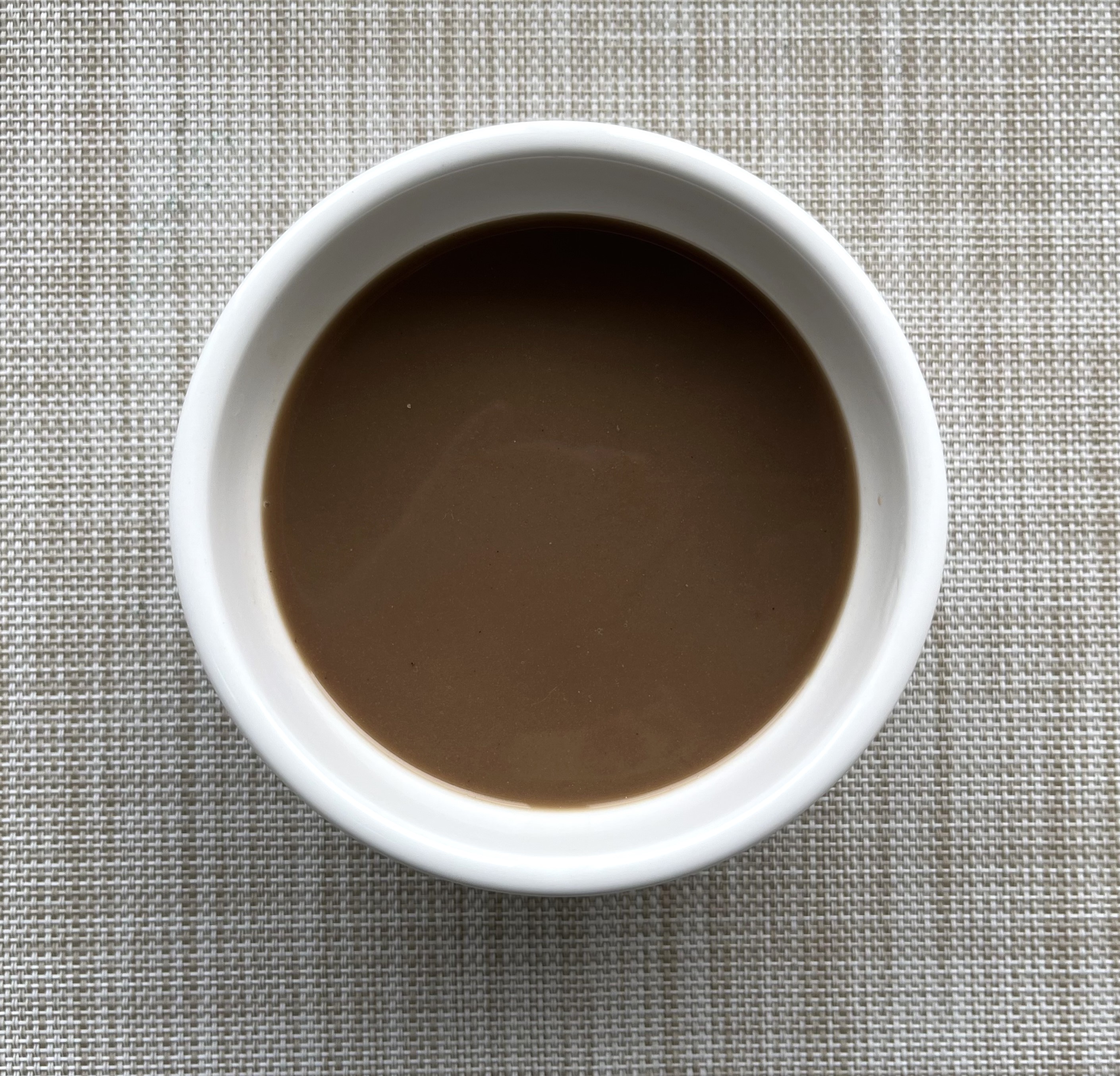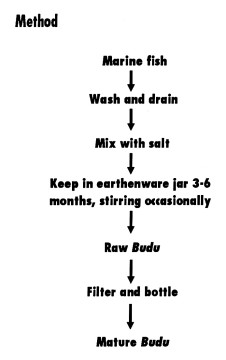Budu
- Name (Thai)
- บูดู
- Name (English)
- Southern Thai style fermented fish product
- Local name
- Nam-budu
- Fish normally used
-
Stolephorus indicus (Sai-ton)
Clupeoides sp. (Ka-tak)
Sardinella sp.
- Product
- Fishery
- Ingredients
- Sea water or brackish water fish and salt.
- Fermentation
- 3-6 months.
- Storage life
- 1-2 years.
- Microorganisms
-
Bacillus laterosporus
Reference The traditional fermented foods of Thailand ISBN 9679932249 Year 1995 Bacillus sp.Reference Characterization of proteases produced by newly isolated and identified proteolytic microorganisms from fermented fish (Budu) DOI 10.1007/BF01201880 Year 1992 Bacillus subtilisReference The traditional fermented foods of Thailand ISBN 9679932249 Year 1995 Coryneform bacteriaReference The traditional fermented foods of Thailand ISBN 9679932249 Year 1995 Micrococcus sp.Reference The traditional fermented foods of Thailand ISBN 9679932249 Year 1995 Pediococcus halophilusReference The traditional fermented foods of Thailand ISBN 9679932249 Year 1995 Proteus sp.Reference The traditional fermented foods of Thailand ISBN 9679932249 Year 1995 Sarcina sp.Reference The traditional fermented foods of Thailand ISBN 9679932249 Year 1995 Staphylococcus aureusReference The traditional fermented foods of Thailand ISBN 9679932249 Year 1995 Staphylococcus epidermidisReference The traditional fermented foods of Thailand ISBN 9679932249 Year 1995 Staphylococcus simulansReference Functional and safety assessment of Staphylococcus simulans PMRS35 with high lipase activity isolated from high salt-fermented fish (Budu) for starter development DOI 10.1016/j.lwt.2020.109183 Year 2020 Reference Quality characteristics of high salt fermented fish sauce (budu) produced using autochthonous Virgibacillus halodenitrificans PS21 and Staphylococcus simulans PMRS35 DOI 10.1111/ijfs.15035 Year 2021 Virgibacillus halodenitrificansReference Quality characteristics of high salt fermented fish sauce (budu) produced using autochthonous Virgibacillus halodenitrificans PS21 and Staphylococcus simulans PMRS35 DOI 10.1111/ijfs.15035 Year 2021 - Properties
- Budu is a viscous brown liquid, with grey colloidal fish flesh separated from the fish bones suspended in it, and has a salty taste.
- Method
- The whole fish are washed and drained, then mixed with salt in the proportion of 3:1 to 2.5:1, by weight, and packed tightly in an earthen jar. The jar is Topped with more salt, covered with a bamboo mat, and left in either sun or shade for 3-6 months.
- Production
- In the home or as a village industry, mostly in the south.
- Consumption
- In the South it is eaten by adding chilli, shallots, sugar, and lime juice. In the Central Region it is boiled with lemongrass, galangal, and bitter orange leaves, then decanted off and consumed with rice and various vegetables. This is known as Khao-yam which is a very popular dish in Thailand.


